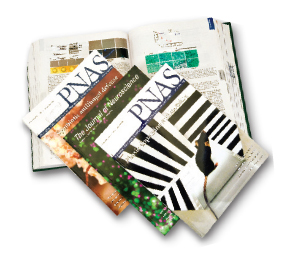First edition
Faculty and students at The University of Texas at San Antonio perform a wide variety of exploratory and creative research projects. These efforts are documented through the research articles they publish, and to highlight the scope and depth of this work, we have listed a few of these below.
Two of UTSA’s outstanding chemists, Dr. Banglin Chen and Dr. Cong-Gui Zhao, students, an Oakridge National Laboratory colleague and other international researchers revealed an exciting method which permits rapid and inexpensive separation of acetylene and ethylene in the journalNature Communications. This finding is important because these two chemicals are used in a wide range of chemical industrial products and may lead to the creation of a future biofuel for automobiles.
UTSA microbiologist Dr. Karl Klose, students and collaborators from UTHSCSA revealed their findings recently in the prestigious Journal of Biological Chemistry. They reported that a specific protein is responsible for activating the transcription of genes encoding cholera toxin. Cholera is a troubling infection of the small intestine that causes diarrhea and dehydration and often leads to death. Cholera is rare in the United States but has a severe impact in developing areas in Africa, Asia and Latin America. This finding increases the possibility of a more effective cholera vaccine than that which currently only provides 25% to 50% protection.
In this article in the journal Applied Neuropsychology, UTSA psychologist Dr. Jeremy Sullivan and colleagues review language function and deficits following traumatic brain injury (TBI) in children. Pediatric TBI frequently presents with long-term chronic deficits, and increasing our knowledge of these deficits will help to suggest effective treatment methods.
In this outstanding article in the journal Frontiers in System Neuroscience, UTSA neuroscientists Drs. Todd Troyer, Charles Wilson and Carlos Paladini, along with graduate student Collin Lobb, utilized computational modeling to reveal the inner workings of the basal ganglia, a brain region involved in movement.
From UTSA’s Department of Public Administration in the College of Public Policy, Dr. Christopher Reddick discusses the role of information technology in the process of emergency management planning. His research, published in the journal Disasters, shows that numerous technologies have had a significant and positive impact in emergency planning since 9/11, especially GPS tracking and wireless technologies.
In this research article published in PLoS One, UTSA biologist Dr. Jose Lopez-Ribot and biomedical engineer Dr. Anand Ramasubramanian describe their creation of a novel biofilm chip. This chip should accelerate the antifungal drug discovery process by enabling rapid, convenient and inexpensive screening of hundreds to thousands of drug compounds simultaneously.
Dr. Dana Forgione, a UTSA Business professor, along with clinical colleagues from the University of Texas Health Science Center (UTHSCSA), discuss a novel analysis method that provides rapid financial decision support for clinical trial research. This method is discussed at length in the Journal of Health Care Finance.
Chair of UTSA’s Department of Biomedical Engineering Dr. Joo Ong and faculty member Dr. Jun Sik Son, as part of a team of UTSA biomedical engineers, recently revealed in the Journal of Controlled Release that biodegradable microspheres can be utilized as a drug delivery method. This finding may increase the clinical utility of existing compounds that have already received FDA approval, thereby increasing treatment options for many patients.
Chlamydia is recognized as the most prevalent cause of reproductive tract disease worldwide and is associated with female infertility. A team of microbiologists at UTSA, including Drs. Ashleh Murthy, Weidang Li, Neal Guentzel and Bernard Arulanandam, along with UTHSCSA researcher Dr. Guangming Zhong, documented their progress in creating a treatment for chlamydia in the prestigious journal Vaccine.
UTSA biologist Dr. Astrid Cardona and a colleague published a review in the prestigious journal Nature on the topic of a particular type of brain cell, the myeloid cells of the central nervous system. Solving the mystery of these brain cells will provide insights into disorders such as trauma, infection or neurodegeneration that occur in diseases such as Alzheimer’s and Parkinson’s.
Utilizing a world-class $3 million microscope capable of imaging single atoms, UTSA nanoscientist and Chair of the Department of Physics and Astronomy Dr. Miguel Yacaman and a team of international colleagues published their latest findings in the journal ChemComm. These high-resolution images at the nanoscale revealed that gold atoms often organize themselves into pentagon-shaped atomic structures.
UTSA’s Dean of Engineering and biomedical researcher Dr. Mauli Agrawal, along with students, revealed the potential of creating an animal model of artery calcification with polymer scaffolds and human cells in the Journal of Tissue Engineering and Regenerative Medicine.
Error processing SSI file

